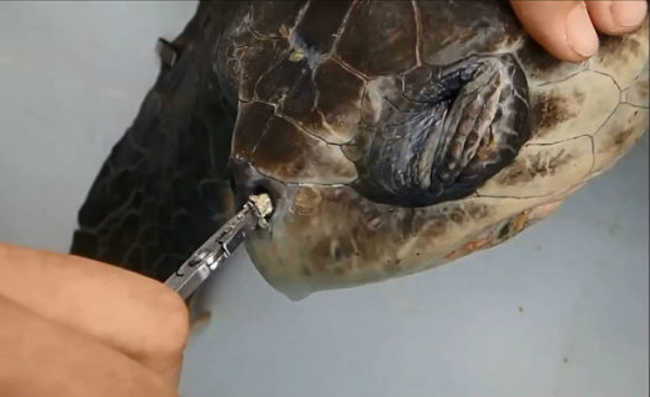Initiatives can insert Brazil into the growing lithium battery market
Lithium batteries are used to store energy in electric vehicles, a market with great room for expansion in Brazil

Brazil may soon join the group of countries that manufacture batteries for electric mobility, a segment led by China, the United States, Japan and South Korea. At least four initiatives, involving national companies in collaboration with foreign ones, are underway in the country for that purpose. In most of them, battery technology has been or is being developed by the international partner.
One of the projects is headed by the Minas Gerais Development Company (Codemge), which signed an agreement in 2018 with the English company Oxis Energy to establish the first industrial-scale factory of lithium-sulfur (Li-S) battery cells in the region. world. The technology, according to Oxis, has a performance and safety superior to that of lithium-ion batteries, the main solution that supplies the electric vehicle market.
The traditional battery maker Moura, the fuel cell system developer Electrocell and a consortium that brings together the miners of the Companhia Brasileira de Metalurgia e Mineração (CBMM) and the Japanese from Toshiba also plan to establish themselves in this segment.
At first, the target of Oxis Brasil, an undertaking resulting from the partnership between Codemge and Oxis Energy, will be the segment of heavy vehicles, such as buses and trucks, and the defense and aerospace industries, with applications in drones, satellites and vertical take-off and landing electric vehicles (eVTOLs).
Planned to be built in Nova Lima, in the Metropolitan Region of Belo Horizonte, with an investment of US$ 56 million, the factory should start operating in 2022 with an annual production of 300 thousand battery cells. In the second year, the expectation is to reach 1.2 million units, half of the expected total capacity. The structure already foresees a future expansion, which will allow the annual production of 4.8 million cells.
A vehicle battery is actually a set of small batteries (called cells), which are integrated, forming a package, and managed by a software called BMS (Battery Management System or battery management system). A specific cell package with serial and parallel connections is designed for each application.
A battery for buses, for example, requires around 10,000 cells. Rodrigo Mesquita, manager of the New Business unit at Codemge, informs that the factory will not be dedicated to producing the batteries. This function will be carried out by companies that integrate cells and BMS systems.
This year's Nobel Prize in Chemistry was given to three researchers who conducted research related to lithium batteries“We are in the process of defining the partners that will carry out this integration. We hope to attract some of them to Brazil”, he says. Integrators should be nominated by future battery customers. Among the companies that have already shown interest in the equipment are the Brazilian Embraer, the North American Boeing and Lockheed Martin, the European consortium Airbus and the German Mercedes-Benz and Porsche.
Lithium-sulfur battery cell technology was developed by Oxis Energy. Codemge, through the Aerotec investment fund, created by it, last year invested R$ 18.6 million for a 12% stake in Oxis Energy and brought the industrial project to Brazil in order to thicken the production chain of the lithium in Minas Gerais. The region of Vale do Jequitinhonha, in the northeast of the state, emerges with the potential to position itself as a major producer of ore.
Oxis Brasil will be the first factory on a commercial scale for lithium-sulfur batteries on the planet. The technology is under development in several research centers around the world. In Japan, Sony works to create smartphone batteries from the materials, while in the United States, Sion Power Corporation develops lithium-sulfur vehicle batteries. This is also the objective of Projeto Alise, a European consortium made up of 16 companies, of which Oxis Energy is a part, whose focus is the development of new materials and the understanding of the electrochemical processes involved in the sulfur and lithium technology.
In 2018, Brazil produced only 600 tons (t) of lithium, a volume equivalent to about 0.7% of the global market. The Brazilian production was carried out by the Companhia Brasileira de Litio (CBL), a company in which Codemge has an equity interest. The Geological Survey of Brazil estimates that national reserves, concentrated in the Jequitinhonha Valley, account for 8% of the world's ore, around 14 million tonnes. Australia and Chile are the biggest global producers of lithium, with, respectively, 51,000 t and 16,000 t.
Lithium is a light metal with high energy density, that is, capable of concentrating more energy in a smaller space when compared to the nickel-cadmium batteries used in the first cell phones and notebooks or the conventional lead-acid car used for to activate the combustion vehicle engine (see Pesquisa FAPESP nº 258).
Most lithium-ion batteries are built with a combination in which the anode (negative pole) is made of graphite carbon, while the cathode (positive pole) is made of lithium oxide and a mix of metals, which includes nickel, manganese and cobalt. The electrolyte (the medium by which ion atoms move between the poles) is a mixture of organic solvents and lithium salts.
Valdirene Peressinotto, coordinator of research, development and innovation (RD&I) projects at Codemge, explains that, due to the materials used and the production process, this combination of materials presents safety problems when exposed to stressful situations, such as heating above 45 oC, short circuit and perforation, a risk that exists in the event of a vehicle collision.
The battery solution created by Oxis Energy foresees the use of metallic lithium in the anode, replacing the graphite carbon, and a combination of sulfur and carbon in the cathode. The company has developed its own technology for the cathode and electrolyte. Tests carried out indicate that these new batteries are safe, operate normally at temperatures ranging from minus 60oC to minus 80oC and do not explode when punctured or in a short circuit condition.
In addition to operating safety, another advantage of lithium-sulfur batteries is energy density. While lithium-ion batteries concentrate a maximum of 240 watt-hours per kilo (Wh/kg), lithium-sulfur ones store 450 Wh/kg. In practice, this makes it possible to build smaller, lighter batteries that provide vehicles with greater autonomy.
An important fact, observes Peressinotto, is that the lithium-ion ones are already close to their theoretical efficiency limit, while the lithium-sulfur ones still have evolution potential in relation to the energetic density. “Oxis expects to reach a density of 550 Wh/kg by 2020”, informs the RD&I coordinator at Codemge.
Headquartered in Araxá (MG), CBMM is the largest global producer of niobium (see Pesquisa FAPESP no. 277). In 2018, it partnered with Toshiba Corporation to create a new lithium battery. Toshiba's R&D department's proposal is to replace the carbon anode with mixed oxides of niobium and titanium (NTO), keeping the traditional configuration of a lithium metal alloy in the cathode.
According to Rogério Marques Ribas, executive manager of batteries at CBMM, while the carbon anode reacts to lithium and generates structural stress, such as a 13% volume increase during recharge, the NTO behaves differently. “This difference allows for more power and more speed in recharging”, he highlights.
Comparing two batteries with the same energy charge, while the lithium-ion version takes four hours to recharge, the NTO version only needs 10 minutes. The NTO battery also has a durability for use in vehicles over 15 years, while the limit already obtained in the lithium-ion battery is five to 10 years. Another advantage is that the NTO anode provides greater safety in situations of stress due to heating or drilling.
The partnership between CBMM and Toshiba calls for each of the companies to invest US$7.2 million in a pilot plant, which is being built in Yokohama, Japan, and will produce the first units for testing within two years. “Our expectation is to have the technology approved by customers in 2021, which will be the guarantee for the construction of a production line on an industrial scale”, says Ribas.
According to him, another project for the use of niobium in batteries is being carried out by the North American Wildcat Discovery Technologies, in San Diego, California. CBMM is also a partner in the project, whose objective is the use of niobium in the cathode. The project is in the initial stage of development.
The search for better performance in rechargeable batteries for electric vehicles reflects a worldwide effort that began a few decades ago. Announced by the Royal Swedish Academy of Sciences in October, the 2019 Nobel Prize in Chemistry was awarded to American mathematician and physicist John Bannister Goodenough, British chemist M. Stanley Whittingham and Japanese chemist Akira Yoshino for their studies over the years 1970 and 1980 and which led to the development and commercial production of modern lithium-ion batteries.
According to the Global EV Outlook 2019 report published by the International Energy Agency (IEA), the main work in progress today involves changes in the chemical characteristics of batteries, such as cathodes constructed with lithium oxide and a metallic composition formed with 80% of nickel, 10% manganese and 10% cobalt, unlike the current ones, which have an equal share of the three metals.
Another line of development is lithium cathodes with nickel, cobalt and aluminum oxide, a solution used only in small batteries. The most studied material for application in anodes is the silicon-graphite composite. The auto industry expects significant advances in increasing energy density and reducing costs by 2025.
The global fleet of electric cars (pure and hybrid) surpassed 5.1 million vehicles in 2018 and the bus fleet reached 460,000 units, according to the IEA. The expectation for 2030 includes scenarios in which the car fleet will range from 130 million to 250 million. In Brazil, the number of electric and hybrid vehicles reached 10.6 thousand units in 2018, according to data from the National Association of Automotive Vehicle Manufacturers (Anfavea). There are no projections for the Brazilian market, but the expectation of expansion of the national fleet motivates companies to produce lithium-ion batteries locally.
Grupo Moura, a traditional manufacturer of lead vehicular batteries, has established a lithium battery R&D unit at its headquarters in Belo Jardim (PE). Still in 2019, a first version for forklifts arrives on the market. The company also entered into a partnership with the American Xalt Energy, holder of battery technology for heavy vehicles, with the objective of serving, at first, the bus market. A contract was signed with the São Paulo manufacturer Eletra (see Pesquisa FAPESP nº 283).
Fernando Castelão, director of the Lithium Division at Moura, informs that the company will adapt Xalt batteries to the conditions of use in Brazil. A new Moura factory opened in 2018 is designed to produce the item. According to Castelão, lithium-ion batteries require special safety precautions to ensure adequate sealing and protection against contact with water. They also need a cooling system to maintain the correct temperature. “Vehicles in Brazil are subject to climatic conditions different from those in Northern countries”, highlights the executive.
In São Paulo, Electrocell, a company housed in the Center for Innovation, Entrepreneurship and Technology (Cietec) of the University of São Paulo (USP), has been working on the development of vehicle lithium-ion batteries since 2007, technology arising from a project related to fuel cells supported by FAPESP's Pipe program. The company entered into a partnership with Brasil VE Superleves, a national assembler of vehicles with super-compact chassis installed in the Anhanguera Business Park, in Cajamar (SP), and is expected to start its industrial activity in December. The goal is to produce between 40 and 200 units per month, including passenger vehicles with two and four seats, mini-trucks and buses with 12 and 24 seats.
A chemical engineer specializing in the manufacture of lithium batteries in Germany, the director of Electrocell Gerhard Ett points out that initially the company will import the cells and integrate lithium batteries in the country. The first batch will come from Germany, but the company also has commercial contacts in China, the United States and South Korea. “Our goal is to carry out all production locally. We already have the necessary technical knowledge and we have mastered the manufacturing process. We just need scale to start production,” says Ett, who is also a professor at the FEI University Center in São Bernardo do Campo (SP).
For mechanical engineer Paulo Henrique de Mello Sant’Ana, from the Center for Engineering, Modeling and Applied Social Sciences at the Federal University of ABC (Cecs-UFABC), mastering the production of batteries will be strategic in a future of electric mobility. According to him, it is essential for Brazil to position itself as a technology developer and not just a buyer of finished products. “We still don't know if initiatives like CBMM and Toshiba or Codemge with Oxis will have economic viability and the ability to increase the performance of current lithium batteries, but it is excellent that Brazilians are involved in the development process”, he declares.
Projects
- Development of injected graphite composites applied in chemical processes (nº 04/09113-3); Modality Innovative Research in Small Businesses (Pipe); Responsible researcher Volkmar Ett (Electrocell); Investment R$ 601,848.93.
- Development and construction of a semi-automatic fuel cell assembly line (nº 04/13975-0); Modality Innovative Research in Small Businesses (Pipe); Finep Pipe-Pappe Agreement; Responsible researcher Gerhard Ett (Electrocell); Investment R$433,815.72.
- Development of fuel cells integrated with software and hardware for monitoring, diagnostics, control and peripherals (nº 00/13120-4); Modality Innovative Research in Small Businesses (Pipe); Responsible researcher Gerhard Ett (Electrocell); Investment R$352,705.02.










